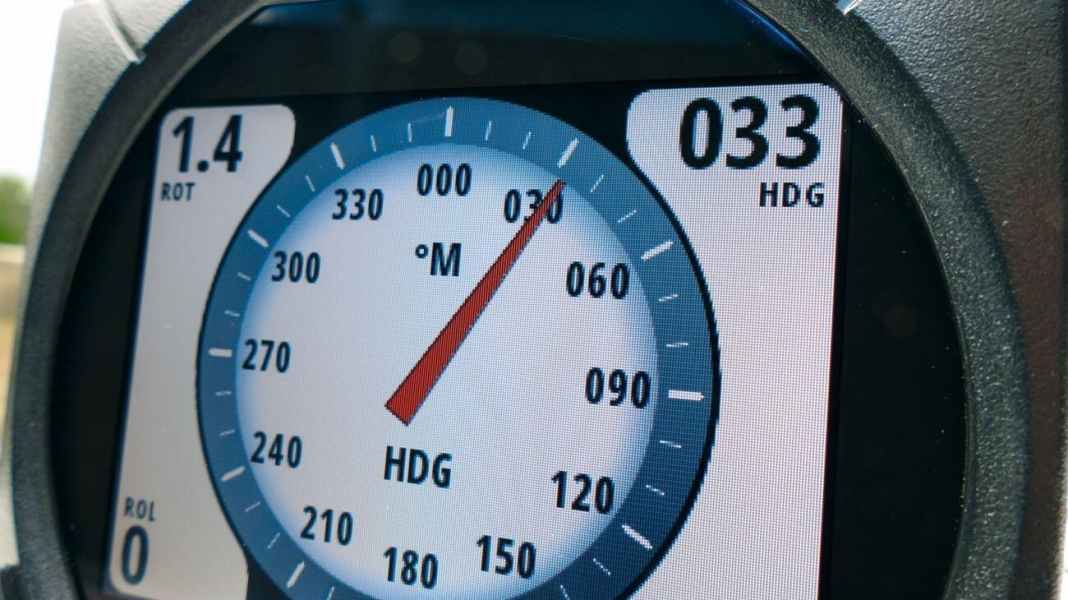
The navigation electronics on sailing yachts require data from the electronic compass for four main functions in addition to the steering display: the forward-orientated chart display, the radar overlay and the autopilot. Networked wind instruments use the course to determine the geographical wind direction. And wind shifts can be read directly from this. This in turn helps you to decide when you will reach your destination or course mark faster on the other bow.
But why from the compass - after all, every GPS receiver also provides a course? However, this is the direction of movement over ground, which usually does not correspond to the direction in which the bow, wind instrument and radar antenna are pointing. Anyone travelling in tidal areas will be familiar with this effect.
Eight devices from six manufacturers were tested. The prices range from 200 to 857 euros. Six models can only be connected via NMEA2000 (N2K), one only has NMEA0183 and one offers both connections. Two of the NMEA2000 devices also have an integrated GPS receiver.
